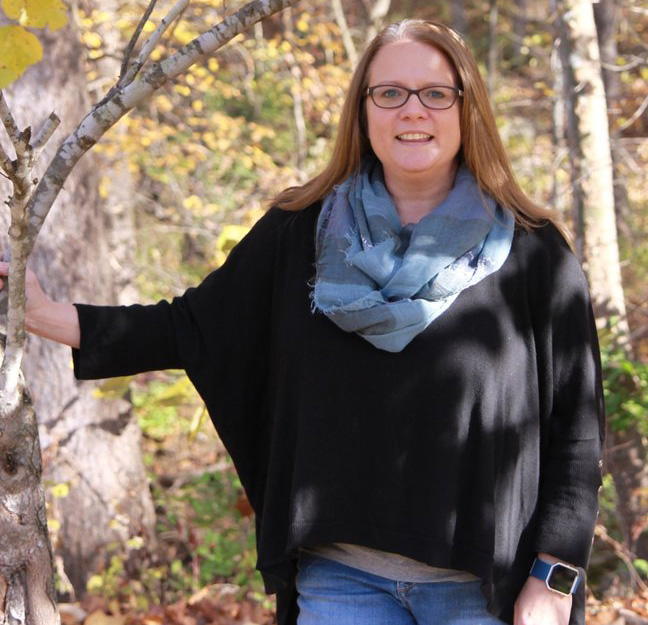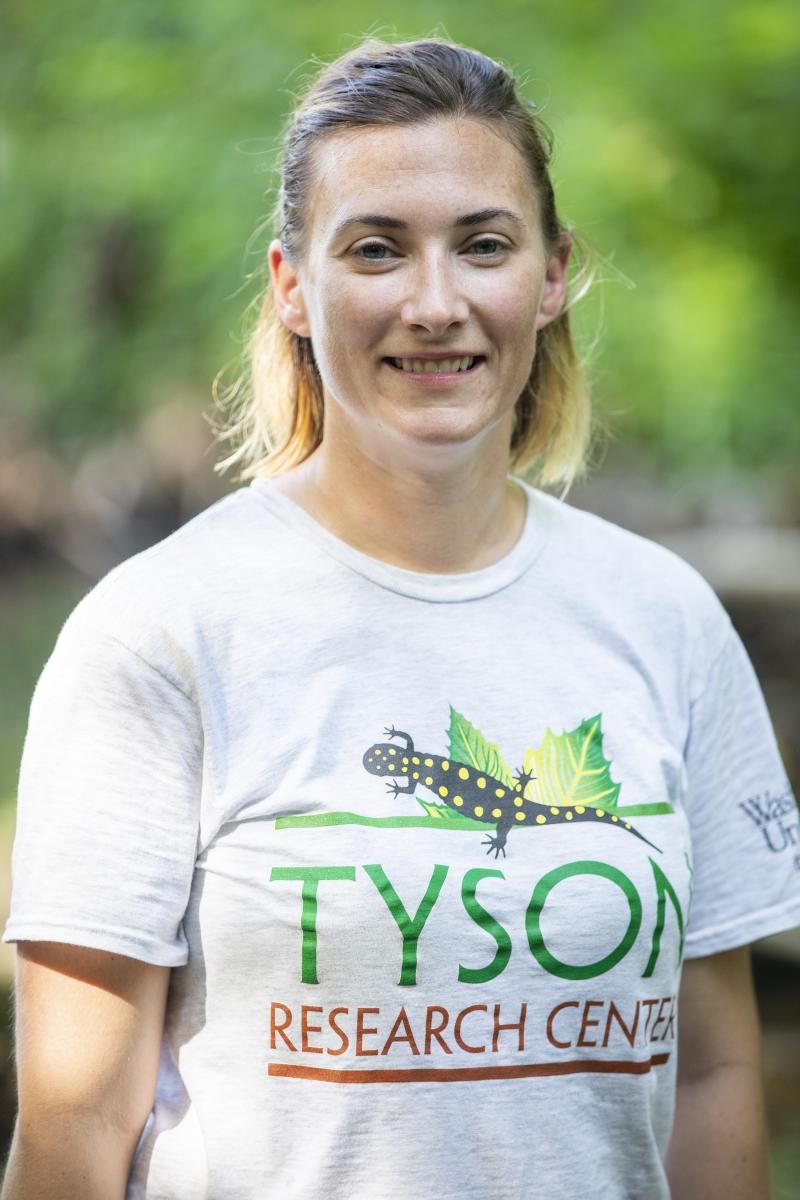Restoration of LaBarque Creek near the Tyson Research Center has sparked new life in a beleaguered aquatic ecosystem. The Ampersand sat down with Kim Medley and Elizabeth Biro to find out more.
Thirty miles west of WashU’s Danforth campus, adjacent to what was once a kids’ ballpark, signs of life are springing up along a stretch of LaBarque Creek.

The creek, a tributary to the Meramec River, is one of the area’s most pristine aquatic ecosystems, thanks to a relative lack of development within its watershed. In this section of the creek, small fish now linger along its banks and dragonflies hover above native grasses while water bubbles through a hairpin bend in the channel. But the scene here wasn’t always so picturesque. This field used to be muddy and barren, the trees and shrubs whose roots once stabilized the land having been cleared by a previous landowner. The creek bullied its way through the field, scouring away hundreds of tons of soil that had been on track to blanket the streambed and stifle the aquatic ecosystem.
“Whenever we’d get heavy rain, the creek would slam right into the bank, cutting it back, eroding it, and sending tons of sediment downstream,” said Kim Medley, an evolutionary ecologist and director of Washington University’s Tyson Research Center. “Sediment is actually one of biggest threats to this type of ecosystem because it can choke out habitat for small insects that serve as the base of the food web.”

“You don’t want to be that landowner – the one who’s responsible for ruining the ecosystem downstream,” said Elizabeth Biro, Tyson staff scientist and natural resources coordinator. So the research center, which had purchased the area in 1986 to be used for education and field research, began efforts to stabilize the creek and surrounding land.
After several attempts were thwarted by extreme flooding, the restoration started in earnest last June. A partnership with The Nature Conservancy – particularly the efforts of Steve Herrington, the Missouri Director of Freshwater Conservation – spurred the project. Herrington, an expert in aquatic conservation who has overseen major restoration projects across the U.S., secured funding from Boeing to cover much of the costs of the restoration. He also led the collaboration with Coastal Hydrology, the engineering firm that designed and constructed the stabilized streambank.
The restoration began with excavating the bend that had been severely eroding, then rebuilding the area in layers, Biro explained. The bottom layer consists of trees and brush, with their roots pointed out toward the creek channel, which serves as a sort of scaffolding. Next workers placed a biodegradable fiber blanket over the layer of trees to help hold it in place, added dirt, more fiber, and hundreds of live tree cuttings and seedlings, whose roots will act as fingers to further stabilize the site.
“There’s a lot going on underneath us,” said Biro.
Coastal Hydrology’s technicians shaped the new, more stable landscape into terraces, which mimic a flood plain by giving the creek room to expand during storms without scouring away the field.
“This slows down the water, prevents erosion, and allows the stream to repair itself,” said Medley.
This bioengineering approach – which, in technical terms, is a combination of live brush layering, root wad toe, and channel reshaping – has been used before, but not much in Missouri, Biro said. In most cases, the city or county would instead dump large rocks, sometimes called riprap, along the banks of an eroding stream. Although this method can help stabilize the physical system, it does nothing to restore habitats for the flora and fauna that characterize a healthy aquatic ecosystem. The approach can also require frequent repairs and is prone to structural failure, since it typically does not involve replanting vegetation. Tyson’s strategy will help the creek look and act more naturally, Biro said.
Coastal Hydrology, which primarily operates in the southeastern U.S., is uniquely experienced in this type of restoration, Biro noted, which is one reason Tyson and The Nature Conservancy partnered with the firm. Because this approach has rarely been applied in the Midwest, dozens of ecologists and technicians from nonprofit organizations and federal and state conservation departments ventured to the site to observe the process, hoping to gather insights for future restoration efforts.
Now, a year after the reconstruction of this section of LaBarque Creek, Tyson researchers are beginning to see the fruits of their fixer-upper project.

There is ample evidence that the flood waters have been tamed and the creek is behaving like a healthy waterway: Sand deposits have accumulated on both banks; the surrounding land is no longer an uninviting, muddy field; and trees are taking root along the banks, casting shadows across the clear waters that bubble through the bend. The tree roots that protrude into the creek serve double duty, slowing waterflow to curb sediment loss and creating habitat for fish and other creek dwellers. And the plants that have sprung up not only stabilize the banks, they also provide habitat for insects.
“Ideally we’d like to see this ecosystem return to its natural state, where the creek and its inhabitants adapt and change at a more natural pace,” said Medley.
Beyond Tyson’s responsibility to steward its section of the creek, Medley hopes that the restoration effort will provide a sort of living laboratory for research inquiries as the creek ecosystem changes – in particular, to study how the diversity of the creek rebounds post-stabilization. It could also serve as a relatively pristine site for comparative studies of how development impacts watersheds. The species composition and diversity of LaBarque Creek provide important opportunities for investigators studying the population ecology of fish and other aquatic species of conservation concern that are not found elsewhere, Medley noted.
For now, though, she and Biro enjoy keeping an eye on the rebound of LaBarque Creek – Tyson’s own little field of dreams: They rebuilt the creek bank, and the fish and bugs came back.





